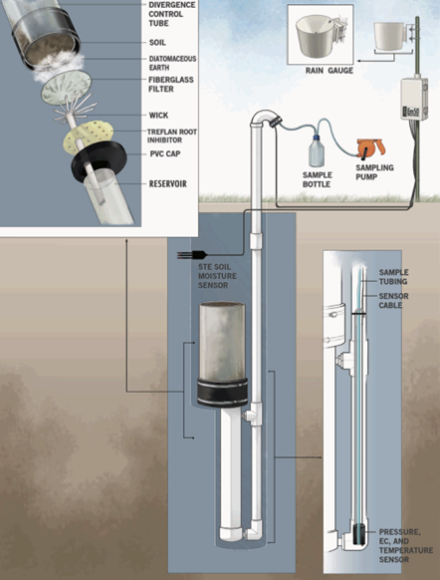Why We're Confident in Windrow Composting: UC Merced's Research Behind the Transition

Windrow piles at SOIL's Waste Treatment site in Mouchinette
A special thanks to our friends at the UC Merced Agroecology Lab led by Dr. Rebecca Ryals and Julie Celestin for conducting this research in partnership with SOIL Haiti and furthering the sectoral knowledge base for ecological sanitation.
Context
Aerobic composting of human feces has been shown to be effective at inactivating Ascaris and eliminating pathogenic bacteria (Berendes et al. 2015, Piceno et al. 2017) following the thermophilic compost stage. However, the short period immediately after containment and before the compost piles reach thermophilic temperatures presented an unknown risk of pathogen release into the environment. Due to this uncertainty, our composting operations originally used an impervious concrete slab beneath the compost bins to prevent any pathogenic liquid from potentially leaching into the environment.
Several composting systems similar to SOIL’s previously determined that underlying soil is an effective filter of pathogens and nutrients, so we decided to conduct an experiment to explore this phenomenon at our own composting site (Donaldson et al. 2013). Our research asked:
-
Is soil effective as a biofilter for compost leachate in SOIL’s compost facility?
-
Is a concrete slab in the compost bins necessary to avoid pathogenic contamination of the environment?
At the time, the research goal was neither aimed at windrow composting nor envisioned as a step toward it—instead, our focus was on testing whether we could safely remove the concrete base from existing bins and avoid using concrete for new ones. The idea of composting in windrows only emerged later, as SOIL refined its approach. Since confirming that soil functions as an effective filter, we eventually shifted toward windrow composting—an evolution that has boosted capacity and lowered infrastructure costs at our waste transformation site in Mouchinette, Haiti.

We conducted a two-year study at SOIL’s compost facility in Cap Haitien beginning May 2016 to monitor pathogen release from lined and unlined compost bins. Pathogen release from compost bins lined with a concrete slab was assumed to be zero. We compared lined bins to an experimental unlined bin that was managed using the same practices. Leachate from unlined bins was collected from soil water at 1.5 m depth from three drain gauge lysimeters (Figure 1). Three lysimeters were also installed in a nearby area unaffected by the compost operations as an uncontaminated control.
Leachate was collected from lysimeters weekly and analyzed for Eschericia coli as an indicator of pathogenic movement into soil water. E. coli concentrations were quantified based on the most probable number (MPN) model in the US EPA Standard Methods for the Examination of Water and Wasterwater. Briefly, Colilert reagent was added to a 100 mL sample of leachate, shaken, poured into a quantitative sample tray, and sealed. The tray was incubated at 34 C for 24 hours, and then placed under an ultraviolet light. Cells in the tray that fluoresced under ultraviolet light were counted, and counts were converted to MPN based on cell size.
Results
Samples were collected weekly from control and compost lysimeters (3 each) for 98 consecutive weeks. In the control area, E. coli was present for 12% of the sampling events (Figure 2). Of these contamination events, four were attributed to activity by cows that trampled the area. The remaining contamination events were random through time and attributed to unknown environmental causes. From the lysimeters installed under the unlined compost bin, E. coli was present for 9% of the sampling events (Figure 2).

Of these contamination events, four occurred immediately after installation of the lysimeters and are considered an artifact of short-term soil disturbance and altered water flow associated with the installation. As with the control, the remaining contamination events were random in time, rather than consistently associated with a particular phase of the composting process (e.g. prior to reaching thermophilic temperature). In both cases, when contamination did occur, MPNs were typically above the maximum detection limit. Overall, occurrence of E. coli contamination in soil water was slightly lower from the compost lysimeters compared to the control, indicating that the interactive effect of the thermophilic composting process and the filtering capacity of the soil was effective at minimizing pathogen release into the groundwater.
Conclusion
The occurrence of E. coli in soil water under compost piles was not statistically different from a control area outside of active composting. Therefore, we conclude that, in combination with an effective thermophilic compost process, underlying soil at the SOIL’s Cap Haitien compost facility was an effective filter of pathogenic bacteria. Since conducting this research, we have transitioned our composting process almost entirely to windrow composting, which has increased the capacity of our waste treatment site and reduced the associated infrastructure costs.

References:
Berendes, D., Levy, K., Knee, J., Handzei, T., Hill, V.R. 2015. Ascaris and Escherichia coli inactivation in an ecological sanitation system in Port-au-Prince, Haiti. PLoS ONE 10:5 doi:10.1371/journal.pone.0123536
Donaldson, B.M., Smith, G.P., Kweon, Y.J., Nammalwar, S. 2013. An analysis of leachate constituents and pathogen destruction in deer mortality static windrow composting. Water, Air and Soil Pollution 224: 1431. https://doi.org/10.1007/s11270-012-1431-y
Piceno, Y.M., Pecora-Black, G., Kramer, S., Roy, M., Reid. F.C., Dubinsky, E.A., Andersen, G.L. 2017. Bacterial community structure transformed after thermophilically composting human waste in Haiti. PLoS ONE 12:6. https://doi.org/10.1371/journal.pone.0177626.